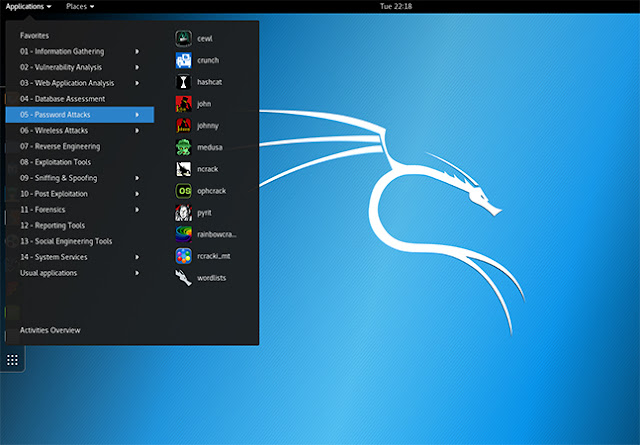100 Most Important Kali Linux Command for beginners.
Short Introduction: What is Kali Linux Operating System (OS)?
- Kali Linux is a distributed version of a Linux company designed for security research, computer forensics, penetration testing, website security checking. It is used in hacking because you already get some hacking software in it. Which is not only for windows. And even if it is, it is not good enough to even do hacking. Kali Linux is used for hacking. And secondly, windows have to be purchased but this Kali Linux operating system is absolutely free.
- Actually the Kali Linux operating system was designed for such tasks as reverse engineering, digital forensics and penetration testing. So, in Kali Linux, about 600 utility tools associated with all these security systems are available. Which can be used to check the security system and through this the security system can be improved more
Hello Friends most important Kali Linux commands are here below:
- apropos Search help manual pages (man -k)
- apt-get Search for and install software packages (Debian)
- aspell Spell Checker
- aptitude Search for and install software packages (Debian)
- cal Display a calendar
- date Display or change the date time
- bg Send to background
- cd Change Directory
- chmod Change access permissions
- chroot Run a command with a different root directory
- chown Change file owner and group
- cut Divide a file into several parts
- dc Desk Calculator
- enable Enable and disable builtin shell commands
- exec Execute a command
- dig DNS lookup
- echo Display message on screen
- dir Briefly list directory contents
- df Display free disk space
- diff Display the difference between two files
- cp Copy one or more files to another location
- clear Clear terminal screen
- cmp Compare two files
- dircolors Colour setup for 'ls'
- eject Eject removable media
- enable Enable and disable builtin shell commands
- ethtool Ethernet card settings
- exit Exit the shell
- false Do nothing unsuccessfully
- fdformat Low-level format a floppy disk
- file Determine file type
- find Search for files that meet a desired criteria
- format Format disks or tapes
- function Define Function Macros
- free Display memory usage
- hash Remember the full path name of a name argument
- head Output the first part of file(S)
- history Command History
- hostname Print or set system name
- iconv Convert the character set of a file
- id Print user and group id's
- ifconfig Configure a network interface
- ifdown Stop a network interface
- ifup Start a network interface up
- install Copy files and set attributes
- jobs List active jobs
- kill Stop a process from running
- killall Kill processes by name
- local Create variables
- locate Find files
- logname Print current login name
- logout Exit a login shell
- lprint Print a file
- mkdir Create new folder (S)
- more Display output one screen at a time
- mount Mount a file system
- netstat Networking information
- man Help manual
- ls List information about file (s)
- ls -a Hidden file showing
- mv Move or rename files or directories
- mtr Network diagnostics (traceroute/ping)
- nslookup Query internet name servers interactively
- open Open a file in its default application
- op Operator access
- passwd Modify a user password
- paste Merge lines of files
- ping Test a network connections
- pwd Print working directory
- quota Display disk usage and limits
- ram ram disk device
- rcp Copy files between two machines
- reboot Reboot the system
- rename Rename files
- return Exit a shell function
- rm Remove files
- rmdir Remove folders(s)
- scp Secure copy (remote file copy)
- sed Stream Editor
- select Accept keyboard input
- sleep Delay for a specified time
- sort Sort text files
- ssh Secure shell clients (remote login program)
- strace Trace system calls an signals
- sudo Execute a command as another user
- sum Print a checksum for a file
- tail Output the last part of file
- touch Change file timestamps
- top List processes running on the system
- uname Print system information
- users List users currently logged in
- uuencode Encode a binary file
- uudecode Decode a file created by uuencode
- watch Execute/display a program periodically
- write Send a message to another user
- wget Retrieve web pages of files via HTTP, HTTPS or FTP
- whereis Search the user's $path, man pages and source files for a program
- who Print all usernames currently logged in
- whoami Print the current user id and name
- ps Process status
I Hope you like this article Thanks for read this article.
Please share this article to your friends and family members..
subscribe to our blog for more articles...









0 Comments
For More Information Please Comment